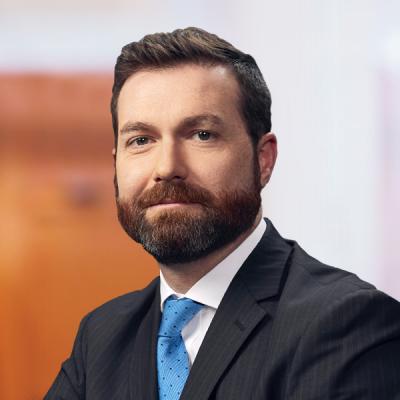What’s New in 5G - October 2021
The next-generation of wireless technologies – known as 5G – is here. Not only is it expected to offer network speeds that are up to 100 times faster than 4G LTE and reduce latency to nearly zero, it will allow networks to handle 100 times the number of connected devices, revolutionizing business and consumer connectivity and enabling the “Internet of Things.” Leading policymakers – federal regulators and legislators – are making it a top priority to ensure that the wireless industry has the tools it needs to maintain U.S. leadership in commercial 5G deployments. This blog provides monthly updates on FCC actions and Congressional efforts to win the race to 5G.
Regulatory Actions and Initiatives
Mid-Band Spectrum
- The FCC grants additional licenses for 2.5 GHz band spectrum to Tribal entities and encourages others to resolve overlapping applications.
- On September 22, 2021, the FCC’s Wireless Telecommunications Bureau (“WTB”) released a Public Notice announcing that an additional 20 applications filed during the 2.5 GHz band Rural Tribal Priority Window have been accepted for filing. A list of the applications, sorted by file number, is available in Attachment A, and a list of the same applications, sorted by applicant name, is available in Attachment B. Petitions to deny are due October 22, 2021.
- In addition, the WTB released a Public Notice encouraging Rural Tribal Priority Window applicants to resolve any mutual exclusivity issues where there is some amount of common geographic area and spectrum overlap with other applicants. The WTB notes that where applicants are unable to voluntarily resolve mutual exclusivity, the FCC is statutorily required to award the licenses through auction.
- On September 30, 2021, the WTB released an Order granting a waiver request submitted by Tolowa Dee-ni’ Nation (“TDN”) regarding the definition of eligible Tribal lands for purposes of the 2.5 GHz Rural Tribal Priority Window. Grant of the waiver will allow TDN to provide service on two parcels immediately adjacent to 160 acres of reservation land on the Smith River Rancheria in northwest Del Norte County, California.
- The FCC takes additional action to protect federal incumbents operating in 3.5 GHz band spectrum.
- On September 29, 2021, the FCC’s WTB and Office of Engineering and Technology (“OET”) released a Public Notice approving a request by Amdocs – a Spectrum Access System (“SAS”) administrator for the 3.5 GHz band – to amend its SAS authorization by permitting it to use Key Bridge’s Environmental Sensing Capability (“ESC”) to protect federal incumbent operations in the band.
- On September 29, 2021, the FCC’s WTB and Office of Engineering and Technology (“OET”) released a Public Notice approving a request by Amdocs – a Spectrum Access System (“SAS”) administrator for the 3.5 GHz band – to amend its SAS authorization by permitting it to use Key Bridge’s Environmental Sensing Capability (“ESC”) to protect federal incumbent operations in the band.
- The FCC clarifies the licenses that will be made available and bidders qualified to participate in its next auction of mid-band spectrum in the 3.45 GHz band.
- The FCC’s WTB and Office of Economics and Analytics (“OEA”) released a Public Notice on September 10, 2021, to correct an error in its inventory of licenses for the upcoming auction of 3.45-3.55 GHz (“3.45 GHz”) band spectrum. Specifically, the Public Notice clarifies the coordination requirements that will apply to both the upper six spectrum blocks and lower four spectrum blocks in the Charlottesville, VA Partial Economic Area (“PEA”). Previous data showed that the coordination requirements apply to all blocks in the PEA.
- On September 17, 2021, OEA and WTB released a Public Notice announcing the bidders qualified to bid in the 3.45 GHz auction. A list of qualified bidders is available here, and a list of bidders not qualified to participate is available here. Bidding in the auction began on October 5, 2021.
- Finally, the Public Notice seeking comment on the process for selecting a Reimbursement Clearinghouse for the 3.45 GHz band transition was published in the Federal Register on September 15, 2021, making comments and replies due September 30, 2021, and October 11, 2021, respectively.
- The FCC provides opportunities for satellite operators to amend their plans for transitioning out of the C-band and provides an updated list of earth station operators.
- On September 3, 2021, the WTB released a Public Notice opening a limited window for incumbent C-band space station operators to amend their final Transition Plans for relocating out of the spectrum. The satellite operators had until September 30 to provide any updates to their Transition Plans since July. The WTB notes that this was the final opportunity for satellite operators to adjust their Transition Plans prior to the December 5, 2021, Phase I transition deadline. The WTB will provide further guidance about Transition Plan amendments related to the December 5, 2023 Phase II transition deadline in the future.
- On September 15, 2021, the International Bureau (“IB”) released a Public Notice with an updated list of incumbent C-band earth stations, reflecting changes since the list was last circulated on June 22, 2021. The list was updated to remove inactive antennas, and it reflects a variety of changes, such as address or coordinate corrections, registration assignments, and other ministerial updates. The list does not include those earth stations for which the IB has dismissed applications as not meeting the criteria for incumbent status since the June 22, 2021 list.
- On September 27, 2021, the IB released a Public Notice with a list of C-band earth stations that reportedly: (i) are inactive; (ii) include more antennas than are currently operational at a site; (iii) are subject to potentially duplicate registrations; or (iv) do not receive in the C-band but instead operate on other frequencies. Earth station operators included in the list have 90 days – i.e., until December 27, 2021 – to affirm that their earth stations are in operation. Failure to do so will result in the automatic termination of the operator’s earth station authorization (for category (i) above) or a determination that the antenna does not qualify for incumbent status – and thus interference protection – under the C-band transition rules (for categories (ii) through (iv) above). Finally, the IB reminds certain earth station operators identified in RSM’s July 14, 2021 filing that if they fail to provide the necessary information, they will risk losing their rights to receive relocation assistance and operate in the lower C-band free from harmful interference.
- On September 29, 2021, the WTB released a Public Notice announcing the implementation of the FCC’s incremental reduction plan for Phase I Accelerated Relocation Payments (“ARP”) and adopting the proposals in the Phase I Incremental Reduction Comment Public Notice with a few clarifications. Notably, the WTB affirmed that a space station operator may amend or refile an incomplete or invalid Certification to correct any infirmities without any incremental reduction in the ARP if the space station operator does so before the Phase I deadline. The WTB also clarified that it will only consider remedial action taken by a space station operator if the space station operator has memorialized that action in a Certification (whether amended or refiled). The Bureau, however, stated that the amended or refiled Certification will initiate a new challenge process only with respect to aspects that had not yet been subject to the initial challenge process.
- The FCC takes a new look at making mid-band spectrum available for both public safety and non-public safety uses, including 5G services.
- On September 30, 2021, the FCC adopted an Order and Further Notice of Proposed Rulemaking on use of the 4940-4990 MHz (“4.9 GHz”) band for public safety and potential non-public safety operations. The Order vacates the previous rules adopted for the band under the Trump Administration that permitted a single statewide entity – designated as the State Lessor – to use and lease the 4.9 GHz band for non-public safety purposes through a state-by-state leasing framework. The Further Notice proposes to establish a nationwide framework for coordinating access to the 4.9 GHz band, seeks comment on ways to encourage public safety use of 5G services and technologies, and considers opportunities for commercial entities to use the spectrum. Comments and replies on the Further Notice are due 30 days and 60 days, respectively, after publication in the Federal Register, which has not yet occurred.
- The FCC’s News Release on the item notes that the decision protects public safety operations “while increasing overall use of the band and putting public safety on a path to 5G.”
Other Spectrum Issues
- The FCC initiates a proceeding to evaluate spectrum for Internet of Things (“IoT”) devices.
- On September 30, 2021, the FCC adopted a Notice of Inquiry seeking comment on the current and future spectrum needs of IoT technologies. As required by the National Defense Authorization Act for Fiscal Year 2021, the Commission seeks comment on: (i) whether adequate spectrum is available, or is planned for allocation, for commercial wireless services that could support IoT; (ii) if it is not available, how to ensure there is adequate spectrum for the growing needs of IoT; (iii) what regulatory barriers may hinder the growth of IoT; and (iv) how unlicensed operations and licensed spectrum affect the growth of IoT. Comments and replies are due November 1, 2021, and November 16, 2021, respectively.
- On September 30, 2021, the FCC adopted a Notice of Inquiry seeking comment on the current and future spectrum needs of IoT technologies. As required by the National Defense Authorization Act for Fiscal Year 2021, the Commission seeks comment on: (i) whether adequate spectrum is available, or is planned for allocation, for commercial wireless services that could support IoT; (ii) if it is not available, how to ensure there is adequate spectrum for the growing needs of IoT; (iii) what regulatory barriers may hinder the growth of IoT; and (iv) how unlicensed operations and licensed spectrum affect the growth of IoT. Comments and replies are due November 1, 2021, and November 16, 2021, respectively.
- The FCC provides an estimate of upcoming spectrum auctions.
- As required by Congress, the FCC’s OEA released a Public Notice on September 30, 2021, estimating which auctions it will conduct over the coming federal fiscal year (October 1, 2021 – September 30, 2022). The auctions listed include the 2.5 GHz auction, the ongoing 3.45 GHz band auction, and a broadcast auction.
5G Networks and Infrastructure
- The FCC provides additional guidance on, and assistance with, its program to reimburse providers for securing their networks.
- On September 10, 2021, the FCC’s Wireline Competition Bureau (“WCB”) released a Public Notice announcing the establishment of a Fund Administrator Help Desk for its program to reimburse providers for removing equipment and services that pose a national security risk from their networks. The Fund Administrator Help Desk will assist the public and interested providers with questions about the reimbursement program and the application filing process.
- On September 27, 2021, the FCC hosted a webinar on the rip-and-replace reimbursement program. The webinar, among other things, provided an overview of the program, provider eligibility, and application procedures, including a walk through the online application portal.
- On September 27, 2021, the WCB released a Public Notice formally announcing that the filing window for the Secure and Trusted Communications Networks Reimbursement Program will open on Friday, October 29, 2021 at 12:00 AM ET and close on Friday, January 14, 2022 at 11:59 PM ET. In addition, the WCB released a list of Frequently Asked Questions, which it will update throughout the program. Finally, the WCB released an infographic with a high-level snapshot of the program and upcoming dates and deadlines. According to the infographic, applications will be accepted in early Q1 2022 and funding allocations will be made in early Q2 2022, at which point approved applicants may begin submitting reimbursement requests.
- On September 30, 2021, the WCB released a Public Notice providing guidance and voluntary best practices for companies participating in the Secure and Trusted Communications Networks Reimbursement Program to efficiently satisfy the FCC’s disposal and verification requirements, while also helping to ensure the security of sensitive data processed or retained in the covered equipment from unauthorized access. The Public Notice also revises certain certifications included in the application to participate in the Reimbursement Program (FCC Form 5640). Finally, the Public Notice corrects certain costs estimates listed in the Cost Catalog of eligible expenses.
In the Courts
- On September 29, 2021, a New York federal judge granted telecommunications provider ExteNet Systems, Inc.’s request for injunctive relief to allow the construction of a network of small wireless facilities in the public rights of way in the Village of Plandome, New York. The Court found that the Village’s denial was not supported by substantial evidence. With respect to its potential impact on 5G deployment, this case represents another court finding that the appropriate remedy for an unlawful local obstacle to wireless deployment is an injunction ordering the local authority to “issue all necessary permits and authorizations . . . to put [the telecommunications provider’s] application into effect.”
Legislative Efforts
- The House introduces a bill that would make additional mid-band spectrum available for commercial use, shared federal use, or a combination thereof.
- On September 27, 2021, Chairman Doyle and Representative Matsui introduced the Spectrum Innovation Act of 2021, which, if enacted, would require the FCC to auction at least 200 megahertz of spectrum in the 3.1-3.45 GHz band for commercial use, shared federal use, or a combination thereof. The bill would also permit the President to modify or withdraw any assignment to a federal station in the 3.1-3.45 GHz band after November 30, 2024 in order to make the spectrum available for auction, so long as the modification or withdrawal will not comprise the primary mission of a federal entity operating in the band. The Build Back Better Act, which was introduced by Representative Yarmuth on September 27, 2021, contains a subtitle with text similar to the Spectrum Innovation Act.
- On October 6, 2021, the House Energy and Commerce Committee held a hearing entitled “Strengthening Our Communications Networks to Meet the Needs of Consumers.” During the hearing, the Committee will consider the Spectrum Innovation Act and eleven other bills, including the Wireless Resiliency and Flexible Investment Act and the Spectrum Coordination Act.

What’s New in 5G - September 2021
September 1, 2021| Blog|

What’s New in 5G - August 2021
August 3, 2021| Blog|






